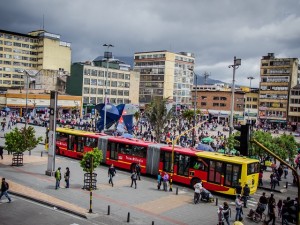 According to a new study out of the University of California, Berkeley, the key to successful transit lines is connecting a lot of people to a lot of jobs.
According to a new study out of the University of California, Berkeley, the key to successful transit lines is connecting a lot of people to a lot of jobs.
The reason this study is so significant is that it compiles decades of real-world data to predict the success of a given transit route and both updates and fleshes out the transit planning model most used since the 1970s.
Here are a couple of the most interesting findings from this study:
- 62% of a transit route’s success is tied to whether it serves areas that are dense in both jobs and population, and have expensive parking.
- Transit routes that reach concentrations of high-wage jobs and leisure jobs (in shops, restaurants, arts, and entertainment), and that serve Metro areas that are large and congested are typically the most successful.
- Providing access to specific kinds of jobs makes a difference too. Transit must provide good access to high wage jobs specifically to draw choice riders to the systems. Leisure jobs around transit help too, by creating 24-hour a day, mixed-use urban neighborhoods that draw transit riders all day long.
The findings of this report seem pretty self explanatory, but this study now provides data for planning that adds real world circumstantial data to previous calculations. Hopefully it will help transit planners make better arguments for their route suggestions in the future, irregardless of costs.
To read an explanation of the report, please visit – http://usa.streetsblog.org/2014/07/10/new-report-reveals-secrets-of-busy-transit-routes-transit-friendly-cities/print/.